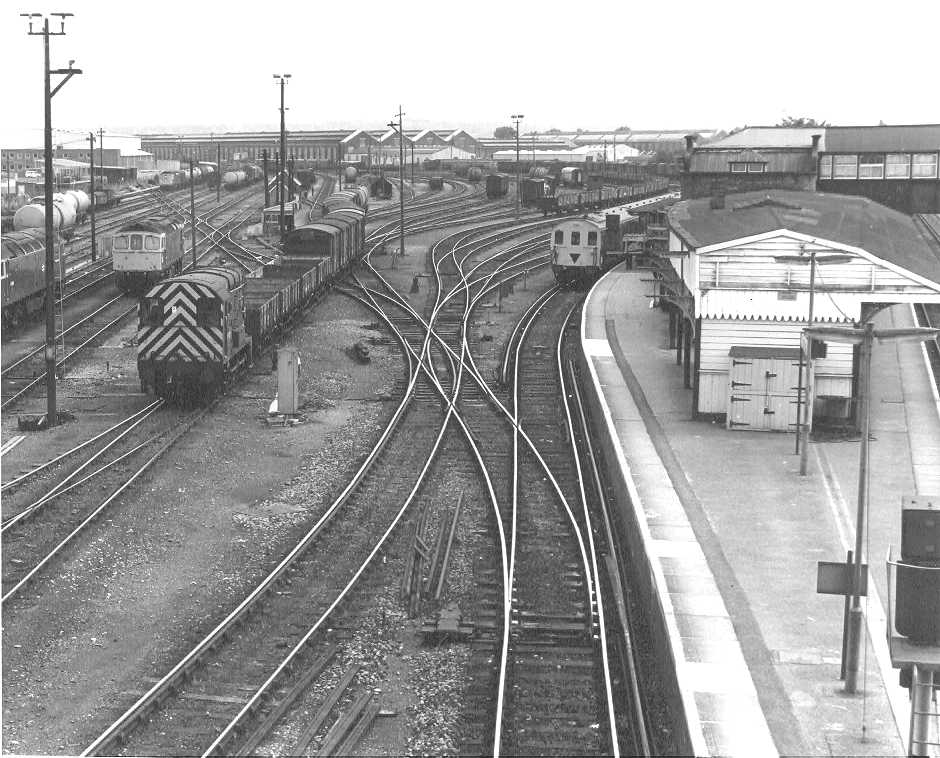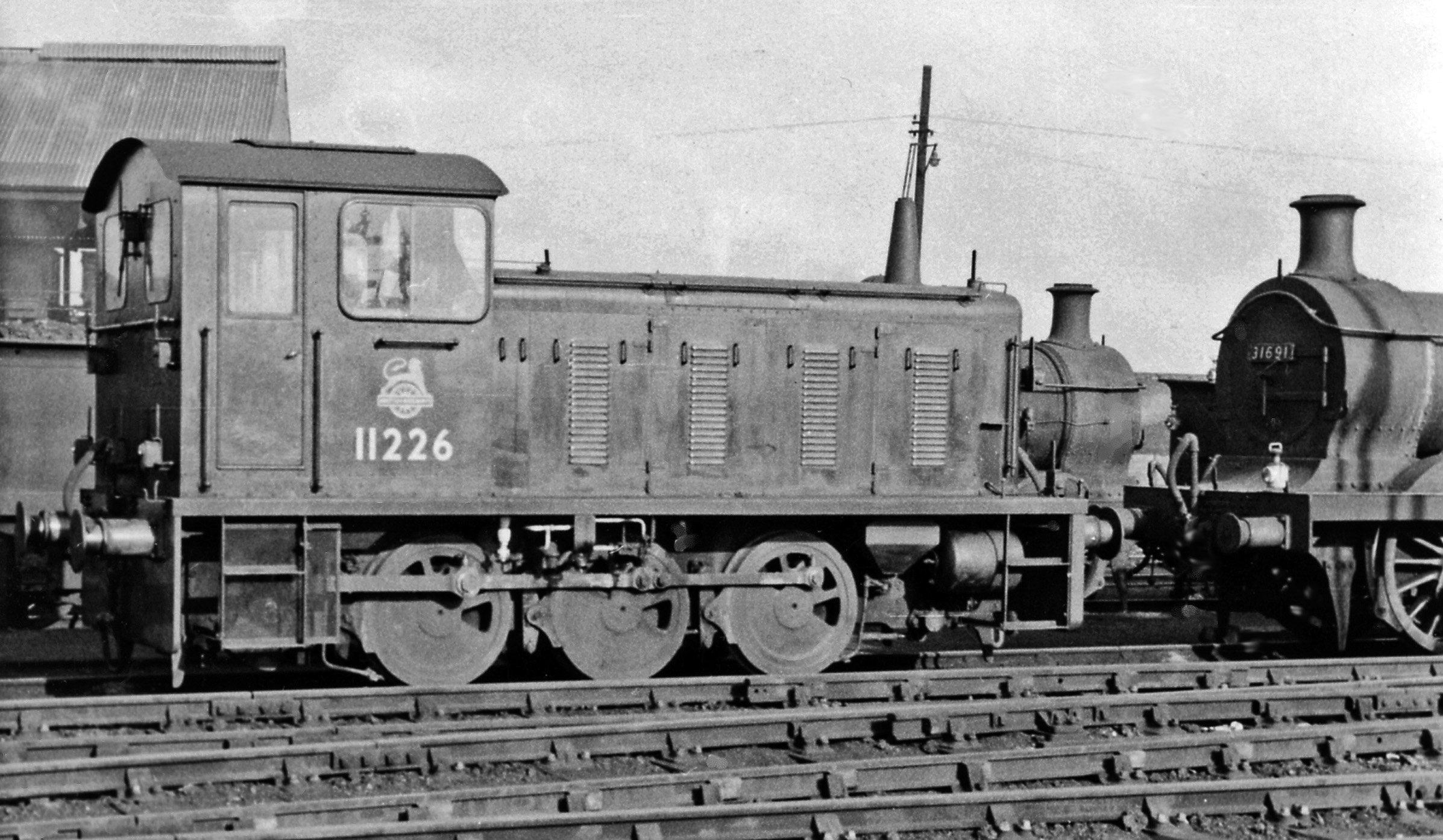|
SR Departmental Locomotives
The Southern Railway numbered its departmental (non-revenue earning) stock, both locomotives and carriages in a series commencing at 1S. The series was retained by the Southern Region of British Rail, but amended so that the numbers carried a 'DS' prefix instead of an 'S' suffix. This page lists the locomotives numbered in this series, including steam, diesel and electric locomotives. {{British Rail Locomotives departmental locomotives ... [...More Info...] [...Related Items...] OR: [Wikipedia] [Google] [Baidu] |
Southern Railway (UK)
The Southern Railway (SR), sometimes shortened to 'Southern', was a British railway company established in the 1923 Grouping. It linked London with the Channel ports, South West England, South coast resorts and Kent. The railway was formed by the amalgamation of several smaller railway companies, the largest of which were the London and South Western Railway (LSWR), the London, Brighton and South Coast Railway (LB&SCR) and the South Eastern and Chatham Railway (SE&CR).Bonavia (1987) pp. 26-28 The construction of what was to become the Southern Railway began in 1838 with the opening of the London and Southampton Railway, which was renamed the London & South Western Railway. The railway was noted for its astute use of public relations and a coherent management structure headed by Sir Herbert Walker. At , the Southern Railway was the smallest of the ''Big Four'' railway companies and, unlike the others, the majority of its revenue came from passenger traffic rather than fr ... [...More Info...] [...Related Items...] OR: [Wikipedia] [Google] [Baidu] |
Locomotive
A locomotive or engine is a rail transport vehicle that provides the motive power for a train. If a locomotive is capable of carrying a payload, it is usually rather referred to as a multiple unit, motor coach, railcar or power car; the use of these self-propelled vehicles is increasingly common for passenger trains, but rare for freight (see CargoSprinter). Traditionally, locomotives pulled trains from the front. However, push-pull operation has become common, where the train may have a locomotive (or locomotives) at the front, at the rear, or at each end. Most recently railroads have begun adopting DPU or distributed power. The front may have one or two locomotives followed by a mid-train locomotive that is controlled remotely from the lead unit. __TOC__ Etymology The word ''locomotive'' originates from the Latin 'from a place', ablative of 'place', and the Medieval Latin 'causing motion', and is a shortened form of the term ''locomotive engine'', which was ... [...More Info...] [...Related Items...] OR: [Wikipedia] [Google] [Baidu] |
Carriage
A carriage is a private four-wheeled vehicle for people and is most commonly horse-drawn. Second-hand private carriages were common public transport, the equivalent of modern cars used as taxis. Carriage suspensions are by leather strapping and, on those made in recent centuries, steel springs. Two-wheeled carriages are informal and usually owner-driven. Coaches are a special category within carriages. They are carriages with four corner posts and a fixed roof. Two-wheeled war chariots and transport vehicles such as four-wheeled wagons and two-wheeled carts were forerunners of carriages. In the twenty-first century, horse-drawn carriages are occasionally used for public parades by royalty and for traditional formal ceremonies. Simplified modern versions are made for tourist transport in warm countries and for those cities where tourists expect open horse-drawn carriages to be provided. Simple metal sporting versions are still made for the sport known as competitive drivi ... [...More Info...] [...Related Items...] OR: [Wikipedia] [Google] [Baidu] |
British Rail
British Railways (BR), which from 1965 traded as British Rail, was a state-owned company that operated most of the overground rail transport in Great Britain from 1948 to 1997. It was formed from the nationalisation of the Big Four (British railway companies), Big Four British railway companies, and was privatisation of British Rail, privatised in stages between 1994 and 1997. Originally a trading brand of the Railway Executive of the British Transport Commission, it became an independent statutory corporation in January 1963, when it was formally renamed the British Railways Board. The period of nationalisation saw sweeping changes in the railway. A process of dieselisation and Railway electrification in Great Britain, electrification took place, and by 1968 steam locomotives had been entirely replaced by diesel and electric traction, except for the Vale of Rheidol Railway (a narrow-gauge railway, narrow-gauge tourist line). Passenger train, Passengers replaced freight train, ... [...More Info...] [...Related Items...] OR: [Wikipedia] [Google] [Baidu] |
National Railway Museum
The National Railway Museum is a museum in York forming part of the Science Museum Group. The museum tells the story of rail transport in Britain and its impact on society. It is the home of the national collection of historically significant railway vehicles such as Mallard, Stirling Single, Duchess of Hamilton and a Japanese bullet train. In addition, the National Railway Museum holds a diverse collection of other objects, from a household recipe book used in George Stephenson's house to film showing a " never-stop railway" developed for the British Empire Exhibition. It has won many awards, including the European Museum of the Year Award in 2001. the museum is about to embark on a major site development. As part of the York Central redevelopment which will divert Leeman Road, the National Railway Museum will be building a new entrance building to connect the two separate parts of the museum together. At the same time, the space around the museum will be landscaped to provi ... [...More Info...] [...Related Items...] OR: [Wikipedia] [Google] [Baidu] |
Ashford Railway Works
Ashford railway works was in the town of Ashford in the county of Kent in England. History South Eastern Railway Ashford locomotive works was built by the South Eastern Railway on a new site in 1847, replacing an earlier locomotive repair facility at New Cross in London. By 1850 over 130 houses had been built for staff (called Alfred Town by the railway but New Town by everybody else). The works employed about 600 people in 1851 increasing to about 950 by 1861, and around 1,300 by 1882. A carriage and wagon works was opened on an adjacent site in 1850. The works led Ashford to be the largest industrial town in east Kent. South Eastern and Chatham Railway On 1 January 1899, the railway entered into a working union with the London Chatham and Dover Railway, forming the South Eastern and Chatham Railway (SECR). Each antecedent company had its own locomotive works, but Ashford was larger than Longhedge works and so became the principal locomotive works for the new organisation. ... [...More Info...] [...Related Items...] OR: [Wikipedia] [Google] [Baidu] |
Eastleigh Railway Works
Eastleigh Works is a locomotive, carriage and wagon building and repair facility in the town of Eastleigh, in the county of Hampshire in England. History LSWR The London and South Western Railway (LSWR) opened a carriage and wagon works at Eastleigh in 1891. In 1903, the Chief Mechanical Engineer, Dugald Drummond, oversaw the construction of a large motive power depot in the town; replacing the existing maintenance and repair shops at Northam, Southampton. In January 1910, locomotive building was likewise transferred to the new workshops at Eastleigh from Nine Elms in London. Among the locomotives produced by the LSWR under Drummond at Eastleigh, were the S14 0-4-0 and M7 0-4-4 tank engines, the P14 and T14 4-6-0, and D15 4-4-0, classes. Following the appointment of Robert Urie as Chief Mechanical Engineer in 1912, the works were responsible for the construction of the H15, S15, and N15 (King Arthur) 4-6-0 classes, and the G16 4-8-0, and H16 4-6-0 tank engines ... [...More Info...] [...Related Items...] OR: [Wikipedia] [Google] [Baidu] |
Brighton Railway Works
Brighton railway works (also known as Brighton locomotive works, or just the Brighton works) was one of the earliest railway-owned locomotive repair works, founded in 1840 by the London and Brighton Railway in Brighton, England, and thus pre-dating the more famous railway works at Crewe, Doncaster and Swindon. The works grew steadily between 1841 and 1900 but efficient operation was always hampered by the restricted site, and there were several plans to close it and move the facility elsewhere. Nevertheless, between 1852 and 1957 more than 1200 steam locomotives as well as prototype diesel electric and electric locomotives were constructed there, before the eventual closure of the facility in 1962. After use as a factory for constructing bubble cars, the facility was demolished and has since been redeveloped as part of the New England Quarter of Brighton. London and Brighton Railway The earliest locomotive servicing facility at Brighton was a small engine shed to the north ... [...More Info...] [...Related Items...] OR: [Wikipedia] [Google] [Baidu] |
British Rail Class 04
The British Rail Class 04 is a 0-6-0 diesel-mechanical shunting locomotive class, built between 1952 and 1962 and was the basis for the later Class 03 built in the British Railways workshops. History The prototype locomotive was built in 1947 and served as a departmental shunter at Hither Green depot as number DS1173, before being transferred to the capital stock list as D2341 in 1967. The Class 04 locomotives were supplied by the Drewry Car Co., which at the time (and for most of its existence) had no manufacturing capability. Drewry sub-contracted the construction work to two builders both of whom built other locomotives under the same arrangement. Early locomotives which became D2200-41 (including DS1173) were built by Vulcan Foundry in 1952–56, and later examples D2242-2339 were built by Robert Stephenson and Hawthorns in 1956–61. Design evolution A clear line of development can be seen in the Class 04 from the 0-4-0DM locomotives built by Andrew Barclay ... [...More Info...] [...Related Items...] OR: [Wikipedia] [Google] [Baidu] |



.jpg)




